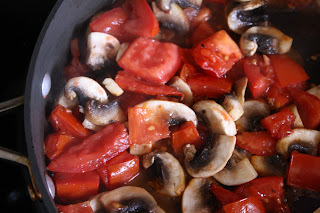Turkey BLT Quesadilla
Ingredients:
Flour tortillas, 2 per person
Turkey, shredded
Arugula
Tomato, sliced
Avocado, sliced
Bacon, cooked
Shredded cheese, any variety
Dijon mustard, 4-5 T
Honey, 2-3 T
Chipotle pepper in adobe sauce, 1 tsp
Apple cider vinegar, splash
Sour Cream for garnish
Mix mustard, honey, chipotle pepper and vinegar together. Adjust ingredients as needed for your taste and set aside.
Better Bonus Tip: If you don’t have all of the ingredients to make the mustard sauce, use what you can. Experiment, have fun! Substitute red wine vinegar instead of apple cider. Use a smoky dried seasoning, like chili powder, instead of the chipotle pepper. Use honey mustard instead dijon mustard and honey. Just remember to taste along the way - you have to make sure it tastes good :)!
Lay out the tortillas, one across from the other - to use as a top and bottom.
Top tortillas with turkey, then veggies, a couple of bacon slices, a drizzle of spicy mustard, and a sprinkle of cheese.
Grill both sides until lightly browned. Try serving with side of sour cream or sliced avocado.
Better Bonus Tip: Try with shredded chicken throughout the year.
Hope everyone had a Happy Thanksgiving!
~Ashley












